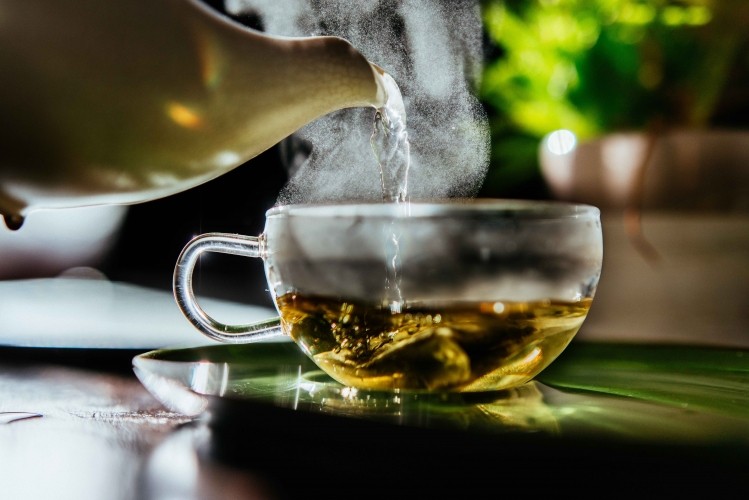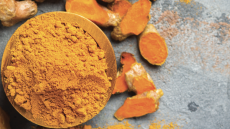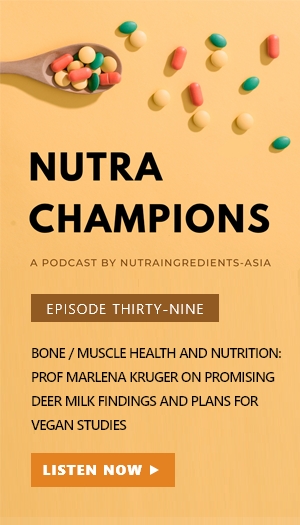Traditional Medicinals: How the extract industry can best tap into the bagged tea sector

In a paper published in the journal Frontiers in Pharmacology, the research team – led by medicinal plant authorities Thomas Brendler and Josef Brinckmann – spill the tea on some of the lessons learned over three decades of formulating complex herbal tea infusion products.
“Incorporating botanical extracts into herbal tea formulations is of vital interest to manufacturers as it allows for the use of herbal ingredients that would otherwise not be suitable for the dosage form,” the review puts forth.
“Because extraction and post-extraction processing both liberate the ingredients’ relevant chemistry and assist in its solubility/dispersal into the final infusion as consumed, these herbs can participate in the formulation as true active ingredients.”
The California-based herbal tea company has been experimenting with botanicals of varying physical properties and performance characteristics since the early 1990s, combining dried tea-bag-cut botanicals with granulated dry extracts, essential oils, dried fruits and dry fruit juice granules.
‘An impractical number of tea bags’
Traditionally prepared by decoction, steeping in bamboo infusers, or maceration, herbal tea has been widely used across traditional medicine for centuries. The filter tea bag is a more recent innovation, introduced in the early 1900s along with the first tea packing machine.
Towards the end of the 20th century, companies started to innovate beyond single-herb teas or traditional formulations, admixing other substances in tea-bag-cut particle size. Producing more complex mixtures with ingredients not always suited for simple infusion, however, revealed its own set of functional constraints.
“Although the amounts can vary depending on the specifics of a formulation, the doses required to achieve therapeutic efficacy for polyherbal formulations can in some cases exceed those that a teabag infusion product can deliver, requiring an impractical number of teabags to be consumed on a daily basis,” the authors wrote. “Even single herbal ingredients, such as echinacea above-ground parts, may require a dose too high to be practical in a teabag indicated for infusion.”
The solution: characterize the unique physical parameters of each botanical to standardize and prepare a suitable extract that may be industrially packaged in double-pouch filter tea bags.
To yield extracts that best match desired phytochemical profiles, the paper shares a variety of techniques, solvents and extraction parameters informed by traditional methods supplemented by modern insights that “offer new horizons in herbal pharmacy.”
Preparing a suitable extract
According to the authors, extracts that meet the pharmaceutical quality and sustainability standards to match the specific requirements for use in an infusion are largely unavailable off the shelf.
For example, medicinal mushrooms or roots and barks, which are traditionally prepared by decoction (simmering) as opposed to steeping, are poor candidates for infusion in their native form, and cannabinoids from hemp may not be water soluble at any temperature or preparation.
“Through the use of post-extraction processing techniques, including blending with excipients and emulsification of the native extracts, these dispersibility/solubility challenges can be overcome, allowing for the use of a range of different extracts in teabag infusion products,” the authors wrote.
They also emphasize the “art and science” of secondary processing of various herbs and plant parts into proper free-flowing particles of uniform length, size and density for homogeneous mixtures that perform from blender to filter tea bag.
“The mixing of dry extracts with tea-bag-cut herbs presents a range of physical (e.g., hygroscopicity) and rheological (e.g., flow rate) challenges during manufacturing, as well as effects on infusion kinetics, dissolution, and dispersion of extractive matter through the tea bag filter paper, uniformity of mass, and analytical challenges, among others,” they explained.
Room for refinement
The authors acknowledge that while they present a range of successful approaches, there is still room to improve the physical properties of the final agglomerated extracts, the oxygen and moisture barriers of sustainable packaging for shelf life, quality control of the finished product and supply chain development for special extracts.
“Our primary aim with this review is to create awareness among extract manufacturers, academia and standard-setting institutions of the specific needs in both manufacture and quality control for the herbal tea market,” they concluded.
Source: Frontiers in Pharmacology
doi: 10.3389/fphar.2022.1013340
“Suitability of botanical extracts as components of complex mixtures used in herbal tea infusions—challenges and opportunities”
Authors: Thomas Brendler et al.















